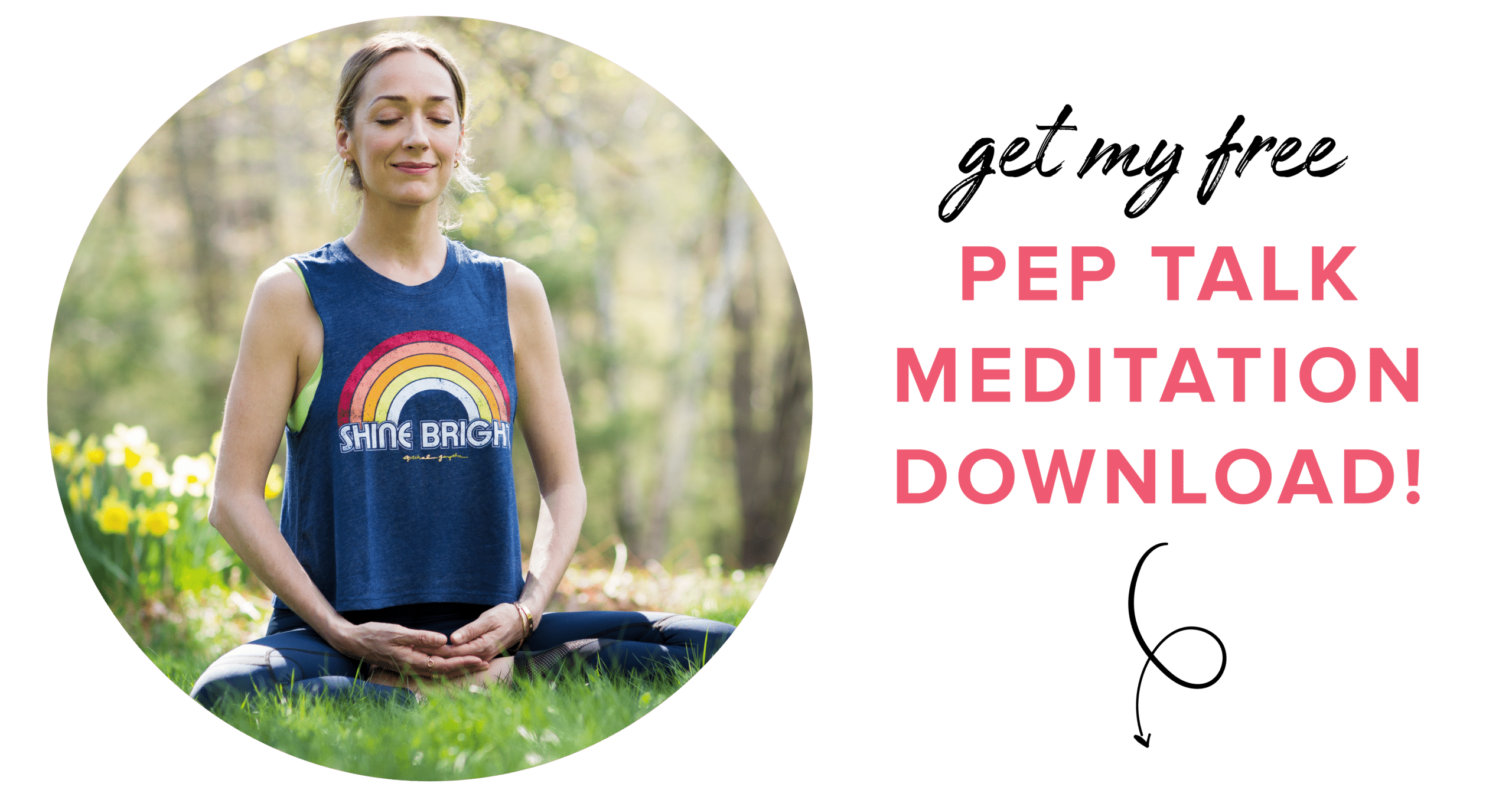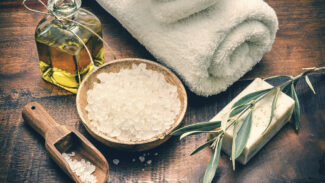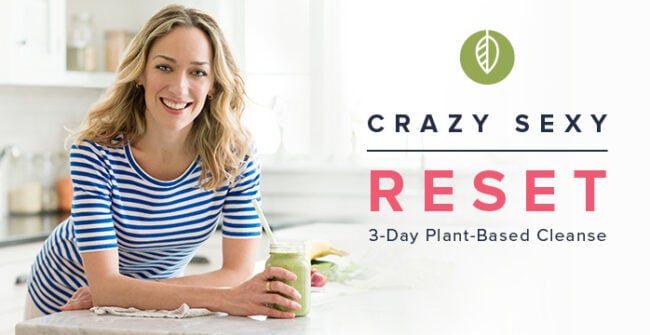Hiya Gorgeous!
I often struggle with depression this time of year. Though it doesn’t totally knock me out, it’s still a wilting bummer that comes on seasonally. In the summer, I love gardening, swimming and, most of all, cycling. The cascade of endorphins and feel-good hormones clear the mental cobwebs and help me stay happy. Strong thighs and mental highs? A twofer!
But when it gets darker earlier, my ability to go for that end-of-day-ride slips and so does my desire to do anything. In addition, I spend a lot less time in the sun (vitamin D!) and so I need to protect myself from the winter blues. And, perhaps, so do you.
Seasonal Affective Disorder (SAD) is a type of depression that impacts millions of people each year. It generally kicks in as the hours of daylight get shorter and can last till early spring. Apparently, 60-90% of folks with SAD are women. Guys certainly aren’t immune but us gals seem to struggle with it more.
We experience long winters here in New England so it’s super important to be mindful of what my body needs amidst the snow banks—otherwise, hello cravings! Namely, simple carbs, wine and way too much TV—followed by fatigue and moodiness. Sound familiar?
Here are ten tips to help you with Seasonal Affective Disorder.
1. Make sure you’re taking vitamin D
In addition to many cancers, high blood pressure, diabetes and heart disease, a vitamin D deficiency is also linked to depression. So if you’re feeling SAD, now is a good time to get your D levels tested. According to my friend Dr. Mark Hyman, you want to get tested for 25 OH vitamin D. For optimal range, you should be 100 to 160 nmol/L or 40 to 65 ng/ml. For cancer patients, it’s closer to 80.
Most integrative docs recommend at least 1,000 IU’s of vitamin D2 or D3 daily in winter months, and more (up to 5,000 IU’s) if you’re heading into winter already low. There are two types of vitamin D: D2 and D3. D2 is plant-based and D3 is almost always animal-based. Most research has shown that vitamin D3 is more efficiently absorbed compared with vitamin D2. So, you may want to choose vitamin D3 to get the most out of your supplement—this decision is totally up to you. Until recently, there were no vegan forms of D3, although, this has recently changed. Both the Vitashine and the Garden of Life brands now make vegan D3 supplements. Unfortunately, I cannot vouch for their effectiveness so you’ll need to make your own choice.
2. Up your omega-3 intake
Omega-3’s can help maintain healthy levels of the brain chemicals dopamine and serotonin (the feel good neurotransmitters) that increase happiness and reduce symptoms of depression. Vegan sources of omega-3’s include flaxseed, hemp, chia and walnuts. For more info on how to include these essential fats in your day, plus some tasty omega-filled recipe ideas, check out my healthy fats blog here.
3. Get aerobic exercise
Exercise not only improves our mood but it also reduces anxiety and stress, both of which can worsen depression. Take a spin class, do an online workout or groove to your favorite rhythm (Beyonce always cures my blues). Shoot for at least 30 minutes per day, 5 days per week. You will feel so much better if you move consistently.
4. Purchase one of those sun lamps and get a dawn simulator alarm clock
Although I haven’t tried it, I know many people who swear by light therapy. Basically, you regularly sit in front of a special light box that emits full-spectrum light similar in composition to sunlight. It’s been shown to be very effective for helping people with Seasonal Affective Disorder. Dr. Weil goes into great detail about light therapy in this article. Might be worth a shot!
Also, if you use an alarm clock that normally beeps or blares music while it’s still dark out, consider getting a dawn simulator clock which gradually increases the light in your room to wake you up more naturally.
5. Go outside anyway
Exposure to outdoor light is still important so try to get outside daily for at least 10 minutes. Yes, it’s cloudy but light still pokes through and tickles your brain through your glorious peepers. This increases both your serotonin and dopamine levels, which as I mentioned above, both play a starring role in your joy factor.
6. Leave the hermitage (and not just for dinner and drinks)
If you get that cooped up, bored feeling over the winter months, shake it up. Go to local book readings, have tea with friends, go for a drive, window shop in a place that inspires you. Mix up your routine, it will do you a world of good. And don’t forget the power of Zoom. I Zoom with my friend pack weekly. Though I’m not technically leaving the hermitage, it can feel like I am.
7. “Warm” up your green drinks and recipe repertoire
Green juices, smoothies and salads can be less appealing when all you want is a cup of hot cocoa. But, juice can have a “warming” effect if you add a little kick to it. I like to put extra ginger in my green juice when it gets chilly outside. It promotes circulation and healthy digestion. Grab a copy of Crazy Sexy Juice for tons of warming green drink recipes, like the Spicy Sweetie juice. I also love sipping a cup of my Cashew Chai Milk by the fire on chilly evenings.
8. Sleep
Stick to a consistent sleep schedule. Don’t miss your 8 hours of zzz’s and don’t oversleep like a teenager either. Get your cute, fully-rested ass out of bed and carpe diem. There are many ways to set yourself up for sleep success. They include a cool room, covering or removing electronic gadgets that emit light (this messes with your pineal gland and melatonin levels) and staying away from caffeine past 10 a.m. For more info, check out my 10 tips for healthy and restorative sleep here and my top 5 foods for healthy sleep here.











I’ve dealt with SAD most of my life, but was lucky enough to recognize it in college. By my mid twenties and now my thirties, I’m doing all of the things you suggested. I just wanted to +1 all you recommendations. They also have worked for me.
Another note is that it was bad enough for me to relocate. While I grew up on the east coast and dealt with long, cold and snowy winters every year, it was excessively bad when I lived in MN for a couple of years. I knew I couldn’t last there long! Now that I live in the Pacific Northwest, it’s much better. Not gone, because we have winter here too, but much better!
Yes this was definitely happening to me in Saugerties this winter, plus it was my first winter here full time. Vitamin D helped, seeing friends, going for walks, excercise and we even did your 3 day clense in the middle of winter from crazy sexy juice and that was great!! I also love warm milks by the fire!! I also discovered flying bird botanicals hot chocolate. 30 calories, and high quality chocolate and great ingredients like rose + chocolate, lavender + mint etc. that is an afternoon treat for sure these days! Thanks Chris. Xo Bari
This is affecting us big time in Northern California. We are loving all the rain but after so many years of drought, we are not use to so many dark days in a row. SAD was becoming a very real thing for our running team. But when you have an awesome support system it is easier not to miss a workout. And surprisingly, like you mentioned, running in the rain has helped. What little sunlight there is between the storms we are able to soak up. Plus, we have the added mood boosting benefits of the cardio from our run.
Please distinguish between complex carbs are crap carbs, don’t lump them together because they are enormously different. Our bodies run on glucose that we get from complex carbs, and the demonizing of them dooms people to omit them and suffer the consequences. Sorry to hear Mark is a friend because his T2 diabetes advice is bogus and the same ineffective crap the ADA has been pushing, much to the joy of the meat and dairy industry. Intramyocellular lipids, too much fat in the cells, is the cause of T2, excess glucose is just a symptom. Complex carbs and all plant foods cure T2, and thanks to the esteemed Drs like McDougall, Greger, Barnard, Campbell, Esselstyn, Kempner, Kahn, etc. who aren’t owned by industry, I was able to reverse my diabetes 5 years ago, along with slews of others. I am so sick of the confusionists when the facts are very clear.
Hi Veggietater: Thanks for your comment. We’ve clarified “simple” carbs in the introduction as we feel strongly that a healthy diet should include plenty of complex carbs. During and following the Crazy Sexy You 21-day Total Wellness Program, we’ve seen tremendous improvement in blood sugar control among our folks with type 2 diabetes when they adopted a plant-based diet that’s low in simple carbs and rich in complex carbs. So glad you’ve experienced similar results! xo, Kris
Thanks Kris! Been affected by this more this winter as Vancouver has had a tough go. I bought the dawn simulator alarm clock and it’s one of the best purchases! Also following all of the other recommendations and can’t wait for Spring!
Xo
I’ve been getting outside more and more…it is such a huge help. Particularly when I combine outside time with a bit of exercise time. I feel refreshed. I also, of course, do a TON of Feng Shui-ing this time of year! Since we are STUCK in our DENS, we might as well invest some time to see if our space is indeed working FOR us (not AGAINST us)…It’s been very insightful. Lot’s of Ah-Ha’s over the past few weeks.
Going to go get some Vit D today!
Thanks, as always, for your beautiful insights. xxoo
Lifting my mood with cards and meditations from none other than…Kris Carr. No, I’m not sucking up here people, I truly get a lift from these goodies!
I struggle with SAD during the long Canadian winters. I use a light therapy light in my office for a few minutes every morning and it seems to help. I’ve also increased my vitamin D intake. After reading your post I’m going to increase my omega 3 intake as well. Thanks for the tips!
Love this! I live in Maine, so I am careful about all these things, too. Also, I drink warm smoothies in the winter. Like I literally pour boiling water in them. I have some awesome recipes I’ve tweaked over the years, and I guess they take some getting used to (not for me!), but I drink them every morning now. Kris, I’d love to see some warm smoothie recipes come through here if you’re so inspired. My current fave: a hunk of ginger, a handful of raw cashews, a handful of coconut flakes, 4 clementines (or a big orange), optional nub of banana, 3 leaves of kale, a spoonful of honey, and fill it up with boiling water. SO GOOD.
Kris, I love your messages, your style, and you!
Thank you for all the help and encouragement you give so freely!
I suffer from a form of SAD. I live in Minnesota and for the last several years we have had a shift in climate – barely any snow. I am in my fifties. I am snow deprived. For the past week the weather people have been forecasting a foot of snow. I was so excited and then today they said it shifted and we will get a “dusting”. I cried. How can the weather people be so wrong? From a foot of snow to a dusting? We have not had a snowstorm yet this season and it’s Minnesota! Has anyone else experienced snow deprived?
I struggled with SAD for years until my mother-in-law bought me a light box. That was all it took for me!
have anyone tried 5-htp for SAD??? This natural nutrient works magic for low mood & SAD by simply increasing your serotonin levels.. Have a look here:
http://brain-feed.com/beating-the-winter-blues-sad-and-5-htp/
The local community swimming pool (indoors) for Sunday morning lap swimming, just leaves the pool lights on, no arena lighting and even though it is dark outside it feels different and stimulating. The exercise doesn’t hurt either. Do something different, take an art class … forget what season it is … because you are so engaged in something new …
When I lived in Oregon, I was ready to go crazy by February from the darkness and dreary, rainy days. I wasn’t motivated to do anything but sleep and watch movies. Once I moved to Florida for college and then the Carolinas I saw a huge decrease in symptoms. I think the holidays are difficult for most people mainly because of all of the unrealistic expectations and pressure that we place on ourselves. It’s not surprising to me that since women typically carry the emotional burden and expectation of hosting or providing the perfect experience for everyone that they have SAD. I have to be honest and say that I don’t care for the term Seasonal Affectiveness Disorder. I feel like it’s another way that our culture pathologizes normal human feelings and experiences. Another point, American culture is programmed to always be happy, sunny and cheerful so of course we are confused when the normal seasonal changes don’t align with that. Just as with every other season, self care and self love is a must. You don’t have a disorder because you’re tired, sad and burnt out from dark days and stressful holiday expectations.
I am having trouble logging in. I bought the meditation download but, I can’t seem to get in. Could someone please email or text me. Thank you